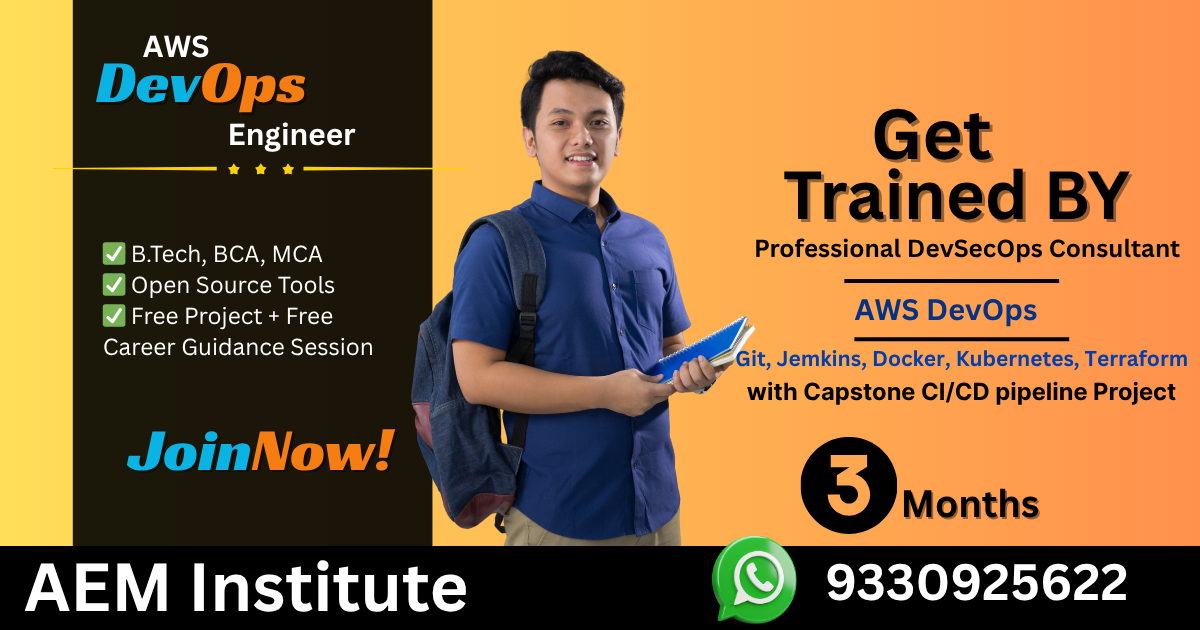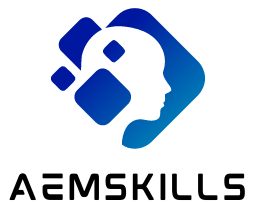Navigating the AWS DevOps landscape requires not only familiarity with foundational concepts but also expertise in architecting scalable, secure, and automated cloud environments. For professionals targeting roles with 4-5 years of experience or higher, interviews often delve deep into AWS services, advanced CI/CD strategies, security, and operational excellence — areas crucial for modern cloud-native operations.
Drawing on the latest industry insights and a decade of consultancy experience in DevSecOps, this comprehensive article addresses 25 advanced AWS DevOps interview questions. With detailed technical answers tailored for in-depth understanding, this guide is crafted to prepare you for senior-level AWS DevOps interviews while ensuring SEO-driven content that ranks top for relevant queries in 2025.
1. How do you design a secure multi-account AWS environment for DevOps teams?
Designing a secure multi-account AWS environment involves using AWS Organizations to centrally manage and govern multiple AWS accounts. This approach enhances security by isolating workloads, applying service control policies (SCPs) to enforce guardrails, and enabling consolidated billing. Each account typically corresponds to a different environment (e.g., dev, test, prod) or business unit, reducing blast radius and improving compliance. Centralized logging, cross-account IAM roles for access, and automated account provisioning with AWS Control Tower or custom frameworks form part of best practices for such architectures.
2. Explain the use of AWS Organizations in managing policies across multiple AWS accounts.
AWS Organizations enables hierarchical management of accounts through Organizational Units (OUs) and policies. Through Service Control Policies (SCPs), administrators restrict or permit AWS service usage across accounts and OUs, enforcing compliance standards centrally. This setup simplifies cross-account security management and enables auditing and role delegation via AWS Single Sign-On (SSO), empowering DevOps teams to operate securely within their designated boundaries.
3. What strategies do you use to automate rollback and blue/green deployments in AWS?
Automated rollback and blue/green deployments mitigate deployment risks. Using AWS CodeDeploy, you can define deployment configurations that monitor health checks and lifecycle events. If failure thresholds are breached, CodeDeploy automatically rolls back to the last stable version. Blue/green deployments are implemented by maintaining two environments and shifting traffic via Elastic Load Balancers (ELB) or Route 53 weighted DNS routing once the new (green) environment passes validation, enabling seamless transitions with minimal downtime.
4. Can you describe how to use AWS Lambda to implement custom actions in CodePipeline?
AWS Lambda allows defining custom pipeline actions in CodePipeline, enabling complex logic or integrations beyond native AWS services. For instance, Lambda can be triggered at specific pipeline stages to perform custom validations, notify stakeholders, or manipulate artifacts. This extensibility enhances automation by embedding business rules or compliance checks directly within CI/CD workflows without additional infrastructure.
5. How do you manage and version your CloudFormation templates for CI/CD pipelines?
CloudFormation templates should be maintained in version control repositories such as CodeCommit or GitHub, enabling change tracking and collaboration. Parameterizing templates enables reuse across environments by injecting environment-specific values via parameters or mappings. Automated validation tools like cfn-lint and AWS CloudFormation Guard can be integrated into build stages to enforce template correctness and compliance before deployment, ensuring reliable infrastructure provisioning.
6. What are the best practices for handling secrets and environment variables in AWS CodeBuild?
Handle secrets by integrating AWS Secrets Manager or AWS Systems Manager Parameter Store with CodeBuild, allowing encrypted retrieval of sensitive credentials without embedding them in the build specification files. Use IAM roles with least privilege permissions for CodeBuild projects, and enable encryption for environment variables. Incorporate dynamic secret retrieval in buildspec files to maintain pipeline security and compliance.
7. How does AWS CodeArtifact help in managing dependencies and artifacts in the pipeline?
AWS CodeArtifact is a fully managed artifact repository service for securely storing and sharing software packages and dependencies. It supports formats like Maven, npm, Python, and more. Integrating CodeArtifact in CI/CD pipelines ensures consistent dependency versions, quick artifact retrieval, and reduces external dependency risks. CodeArtifact can be configured with fine-grained access controls via IAM, allowing DevOps teams to manage package lifecycles efficiently.
8. Describe how to set up monitoring and alerting for AWS CodePipeline failures.
Monitoring CodePipeline requires configuring Amazon CloudWatch Events to detect pipeline state changes or failures. These events can trigger SNS notifications, Lambda functions, or integration with chat tools like Slack for real-time alerts. Setting up CloudWatch dashboards to visualize pipeline execution metrics enables proactive management, while detailed logs provide diagnostics for pipeline failures to facilitate quick resolution.
9. How do you integrate AWS Systems Manager Parameter Store with CodePipeline or CodeBuild?
Parameter Store provides secure, hierarchical storage for configuration data and secrets. CodePipeline and CodeBuild can query Parameter Store via IAM roles to retrieve environment variables or configuration parameters dynamically during pipeline execution. This enables central management of runtime environment settings, enhancing pipeline flexibility, and eliminating hardcoded values.
10. Explain the differences and use cases for AWS CodeDeploy deployment types: in-place vs blue/green.
In-place deployments update applications on existing instances directly, suitable for smaller or less critical environments where brief downtime is acceptable. Blue/green deployments create separate environments (blue and green) — traffic is shifted to the new environment only after validation, reducing downtime and allowing easy rollback. Blue/green is preferred for production applications demanding high availability and risk mitigation.
11. How do you implement continuous compliance checks as part of your AWS pipeline?
Incorporate compliance checks by integrating AWS Config Rules, AWS CloudFormation Guard, or third-party tools into pipeline stages using CodeBuild or Lambda functions. These checks verify resource configurations against organizational policies before deployment approval. Failed compliance tests halt the pipeline, ensuring infrastructure adheres to governance standards continuously.
12. What are the limitations of AWS CodePipeline, and how do you work around them?
CodePipeline has limitations like a maximum of 20 stages per pipeline and lack of native support for parallel execution beyond approval actions. You can work around these by modularizing workflows into multiple pipelines interconnected with triggers or event rules. For complex orchestration, integrating Step Functions or custom Lambda orchestration can extend pipeline capabilities.
13. Describe your approach to implement automated testing in an AWS Serverless CI/CD pipeline.
For serverless applications, write unit and integration tests using frameworks like JUnit, Mocha, or Pytest. Execute these tests in CodeBuild stages within CodePipeline. Use AWS SAM CLI to emulate Lambda runtimes locally. You can also use AWS X-Ray for tracing tests against deployed versions. Automated test results gate deployment progression, ensuring only validated serverless code advances.
14. How do you monitor AWS Lambda function performance and troubleshoot errors?
Monitor Lambda using Amazon CloudWatch Metrics and Logs for invocation counts, durations, and error rates. CloudWatch Logs Insights aids deep troubleshooting by querying log data. Enable AWS X-Ray tracing for end-to-end request path visualization. Configure alarms for error thresholds and use Lambda destinations to capture failures asynchronously for offline analysis.
15. How does autoscaling work with ECS and Fargate in a CI/CD deployment?
Autoscaling in ECS/Fargate leverages CloudWatch alarms based on metrics like CPU, memory utilization, or custom metrics. Scaling policies dynamically adjust task count to meet demand. CI/CD pipelines update ECS task definitions and services with new container images and configurations, enabling seamless deployment with scaling that adapts to workload fluctuations automatically.
16. What are AWS CloudTrail and AWS Config’s roles in auditing and compliance for DevOps pipelines?
CloudTrail records all API calls and user activities in AWS, providing comprehensive audit logs critical for post-incident investigations and compliance evidence. AWS Config tracks resource configuration changes and evaluates compliance against rulesets. Together, they offer end-to-end change tracking and governance visibility integral to secure DevOps environments.

17. How do you ensure immutability in your AWS deployments using CI/CD pipelines?
Immutability is ensured by deploying new versions rather than patching running instances. Techniques include deploying new AMIs or container images with version tags, updating ECS tasks or Lambda function versions via pipelines, and using blue/green deployments. This minimizes configuration drift and environmental inconsistencies, bolstering reliability.
18. Explain how to use Amazon EKS with AWS CodePipeline for containerized application deployments.
Amazon EKS simplifies Kubernetes cluster management. Integrate CodePipeline to automate the build, test, and deployment of container images to EKS by pushing Docker images to Amazon ECR, running integration tests, and applying Kubernetes manifests or Helm charts using kubectl or helm commands in pipeline stages. This supports continuous delivery to highly scalable, containerized Kubernetes workloads.
19. How does AWS CodePipeline integrate with external tools such as Jira or GitHub?
CodePipeline supports webhook integrations to trigger pipelines from GitHub pull requests or commits. It can update Jira issues or send notifications by invoking Lambda functions or external APIs in pipeline actions. This integration streamlines source control management, issue tracking, and communication workflows within enterprise DevOps lifecycles.
20. What techniques do you use to optimize build time and costs in AWS CodeBuild?
Optimize build time by leveraging build cache, selective build phases through conditional commands, and parallel builds when feasible. Use standard optimized build images or custom Docker images. Cost is controlled by limiting long-running builds, using appropriate compute types, and automating cleanup of stale artifacts and logs.
21. How do you implement a disaster recovery strategy for AWS DevOps workflows?
Disaster recovery involves backing up pipeline configurations, infrastructure templates, and artifacts to durable storage like S3 with versioning. Multi-region deployments ensure availability if a region fails. Automate pipeline redeployment and infrastructure provisioning through CloudFormation or Terraform. Maintain runbooks and simulate failover drills regularly.
22. Describe your approach to logging and tracing in microservices deployed on AWS using DevOps practices.
Centralize logs using CloudWatch Logs or third-party services fed by container logs or Lambda outputs. Use AWS X-Ray for distributed tracing to visualize request flows across microservices and detect bottlenecks. Automate instrumentation and log aggregation in CI/CD pipelines, and configure alerts based on error rates for proactive issue management.
23. How do you manage infrastructure drift in your AWS environments?
Continuous drift detection is achieved through AWS Config rules monitoring and CloudFormation drift detection. Any deviation triggers alerts or automated remediation. Infrastructure as code (IaC) principles enforce declarative definitions and pipeline validations, minimizing drift and ensuring environments remain consistent across deployments.
24. How do you use AWS CloudWatch Logs Insights and CloudWatch Metrics for DevOps performance tuning?
CloudWatch Logs Insights enables interactive queries on log data to identify patterns, anomalies, and error spikes. Coupled with CloudWatch Metrics, which monitor real-time service performance, these tools help tune resource allocation, identify underperforming components, and optimize overall system health in a feedback loop integrated with automated pipeline feedback.
25. What security measures do you implement around pipeline artifacts stored in Amazon S3?
Secure pipeline artifacts in S3 by enabling bucket policies and IAM roles for restricted access, using S3 encryption at rest (SSE-S3 or SSE-KMS), and enforcing HTTPS for data in transit. Enable S3 versioning and lifecycle policies for artifact retention and recovery. Enable logging and monitoring on S3 access for auditing purposes.
Conclusion
Mastering these advanced AWS DevOps topics is pivotal to excelling in technical interviews and succeeding in complex cloud operational roles. By demonstrating proficiency in AWS Organizations, CI/CD automation, secure secrets management, infrastructure as code, and continuous compliance, you set yourself apart as a well-rounded cloud engineer or DevOps professional.

Cybersecurity Architect | Cloud-Native Defense | AI/ML Security | DevSecOps
With over 23 years of experience in cybersecurity, I specialize in building resilient, zero-trust digital ecosystems across multi-cloud (AWS, Azure, GCP) and Kubernetes (EKS, AKS, GKE) environments. My journey began in network security—firewalls, IDS/IPS—and expanded into Linux/Windows hardening, IAM, and DevSecOps automation using Terraform, GitLab CI/CD, and policy-as-code tools like OPA and Checkov.
Today, my focus is on securing AI/ML adoption through MLSecOps, protecting models from adversarial attacks with tools like Robust Intelligence and Microsoft Counterfit. I integrate AISecOps for threat detection (Darktrace, Microsoft Security Copilot) and automate incident response with forensics-driven workflows (Elastic SIEM, TheHive).
Whether it’s hardening cloud-native stacks, embedding security into CI/CD pipelines, or safeguarding AI systems, I bridge the gap between security and innovation—ensuring defense scales with speed.
Let’s connect and discuss the future of secure, intelligent infrastructure.
